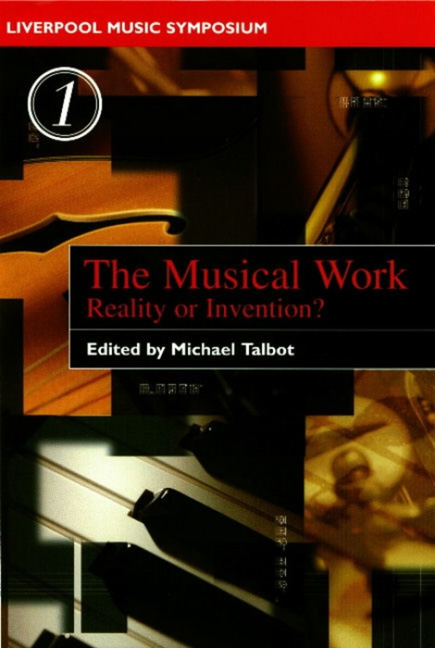Book contents
- Frontmatter
- Contents
- Notes on Contributors
- Introduction
- 1 Some Thoughts on the Work in Popular Music
- 2 Intertextuality and Hypertextuality in Recorded Popular Music
- 3 Work-in(g)-Practice: Configurations of the Popular Music Intertext
- 4 Work and Recordings: The Impact of Commercialisation and Digitalisation
- 5 The Practice of Early-Nineteenth-Century Pianism
- 6 Looking Back at Ourselves: The Problem with the Musical Work-Concept
- 7 ‘The Work’: An Evaluative Charge
- 8 The Work-Concept and Composer-Centredness
- 9 The Musical Artwork and its Materials in the Music and Aesthetics of Busoni
- 10 Re-composing Schubert
- 11 ‘On the Problems of Dating’ or ‘Looking Backward and Forward with Strohm’
- Index of Musical Compositions and Collections
- Index of Personal Names
7 - ‘The Work’: An Evaluative Charge
- Frontmatter
- Contents
- Notes on Contributors
- Introduction
- 1 Some Thoughts on the Work in Popular Music
- 2 Intertextuality and Hypertextuality in Recorded Popular Music
- 3 Work-in(g)-Practice: Configurations of the Popular Music Intertext
- 4 Work and Recordings: The Impact of Commercialisation and Digitalisation
- 5 The Practice of Early-Nineteenth-Century Pianism
- 6 Looking Back at Ourselves: The Problem with the Musical Work-Concept
- 7 ‘The Work’: An Evaluative Charge
- 8 The Work-Concept and Composer-Centredness
- 9 The Musical Artwork and its Materials in the Music and Aesthetics of Busoni
- 10 Re-composing Schubert
- 11 ‘On the Problems of Dating’ or ‘Looking Backward and Forward with Strohm’
- Index of Musical Compositions and Collections
- Index of Personal Names
Summary
Writing entries for the Encyclopedia of Popular Music of the World (EPMOW, forthcoming) is not an easy task. One recurrent problem is that concepts applied to the description of musical structure in the classical repertoire cannot always be used in the same way when denoting ostensible equivalents in the field of popular music. Terminological convention also varies in the classification of harmonic practices as well as in the meaning of basic terms like ‘beat’ and ‘chorus’. However, it is perhaps conventional musicology's notion of ‘the work’ that is the most awkward to use in the description of popular music. The problem can be illustrated by the following attempt to provide a definition of ‘turnaround’ for EPMOW.
1. (original meaning): a short progression of chords played at the end of one section in a song or instrumental number and whose purpose is to facilitate recapitulation of the complete harmonic sequence of that section or of another section within the same number; 2. (transferred meaning) any short sequence of chords, more than two and usually less than six, recurring consecutively inside the same piece of music.
The obvious difficulty here is one of terminology relating to what might or might not be called ‘the work’. Note the clumsy expression ‘song or instrumental number’ and the way in which ‘number’ and ‘piece of music’ are used as synonyms. The question is how to refer to something that, within a given musical culture or subculture, is generally perceived as a musical continuum of determinate duration and of sufficient internal structural cohesion to be understood as sonically identifiable in itself from whatever precedes or follows it, as well as from other similarly integral sets of sequences of musical sound. The concept is really quite simple, even self-evident. The problem is that I felt unable to use the word ‘work’ to denote this concept when defining ‘turnaround’, and that this notion is avoided also by most popular music scholars. Why?
- Type
- Chapter
- Information
- The Musical WorkReality or Invention?, pp. 153 - 167Publisher: Liverpool University PressPrint publication year: 2000

